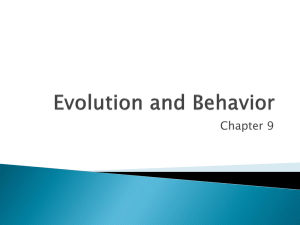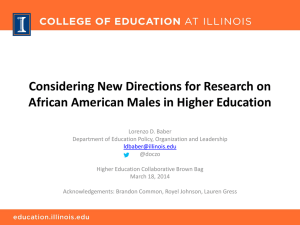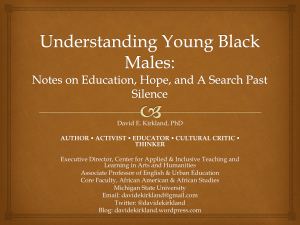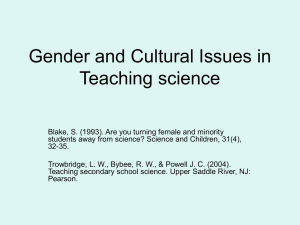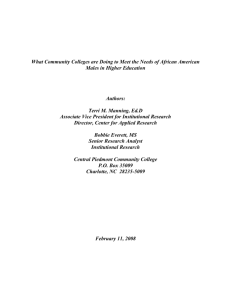Zelechowski
advertisement
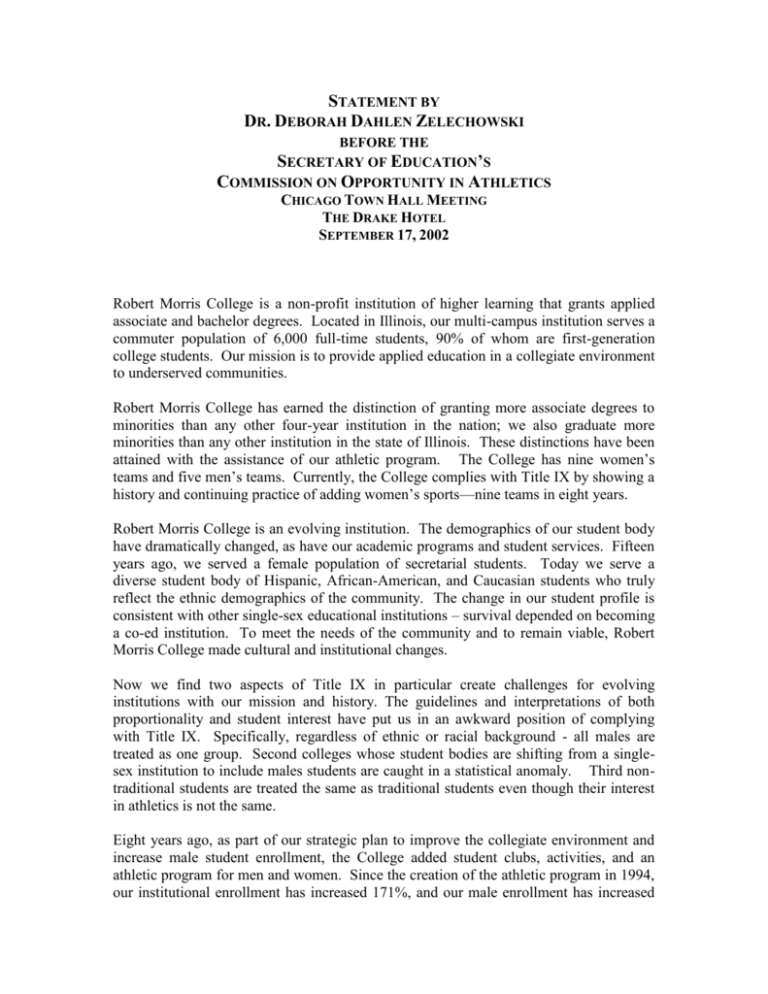
STATEMENT BY DR. DEBORAH DAHLEN ZELECHOWSKI BEFORE THE SECRETARY OF EDUCATION’S COMMISSION ON OPPORTUNITY IN ATHLETICS CHICAGO TOWN HALL MEETING THE DRAKE HOTEL SEPTEMBER 17, 2002 Robert Morris College is a non-profit institution of higher learning that grants applied associate and bachelor degrees. Located in Illinois, our multi-campus institution serves a commuter population of 6,000 full-time students, 90% of whom are first-generation college students. Our mission is to provide applied education in a collegiate environment to underserved communities. Robert Morris College has earned the distinction of granting more associate degrees to minorities than any other four-year institution in the nation; we also graduate more minorities than any other institution in the state of Illinois. These distinctions have been attained with the assistance of our athletic program. The College has nine women’s teams and five men’s teams. Currently, the College complies with Title IX by showing a history and continuing practice of adding women’s sports—nine teams in eight years. Robert Morris College is an evolving institution. The demographics of our student body have dramatically changed, as have our academic programs and student services. Fifteen years ago, we served a female population of secretarial students. Today we serve a diverse student body of Hispanic, African-American, and Caucasian students who truly reflect the ethnic demographics of the community. The change in our student profile is consistent with other single-sex educational institutions – survival depended on becoming a co-ed institution. To meet the needs of the community and to remain viable, Robert Morris College made cultural and institutional changes. Now we find two aspects of Title IX in particular create challenges for evolving institutions with our mission and history. The guidelines and interpretations of both proportionality and student interest have put us in an awkward position of complying with Title IX. Specifically, regardless of ethnic or racial background - all males are treated as one group. Second colleges whose student bodies are shifting from a singlesex institution to include males students are caught in a statistical anomaly. Third nontraditional students are treated the same as traditional students even though their interest in athletics is not the same. Eight years ago, as part of our strategic plan to improve the collegiate environment and increase male student enrollment, the College added student clubs, activities, and an athletic program for men and women. Since the creation of the athletic program in 1994, our institutional enrollment has increased 171%, and our male enrollment has increased 250%. The college credits our athletic program with assisting in attracting males. Today, our male enrollment is 36% of our student body and 36% associate degree graduates are also male. Nationally, male bachelor degree recipients represent only 43% of graduates. Male associate degree graduates represent only 40% of graduates nationwide. These percentages decline drastically for minority males. Whereas black and Hispanic males represent nearly 15% of the U.S. population, they receive only 5% of the nation’s bachelor degrees and only 7% of associate degrees. Minority males in higher education are grossly underrepresented when we look at their demographics. According to the Justice Policy Institute on state spending for prisons, there are more African-American males in prison than in higher education. In fact nationally there are 188,000 more African-American males in prison than enrolled in college. At a time when America needs to increase the graduation rate of minorities—but particularly the graduation rate of minority males—more can be done to increase their participation in education. Equal opportunity needs to consider ethnicity as well as gender, because minority males historically have not had the same opportunities. Educational institutions moving from a history of primarily serving females to include males find themselves in an awkward position. The first question the Commission on Athletic Opportunity wishes to address, namely: “Are Title IX standards for assessing equal opportunity in athletics working to promote opportunities for male and female athletes?” is extremely difficult for RMC to answer. The College is in some ways in a Catch-22: to attract more male students, we need more male athletics. Yet, we cannot offer more athletic teams for males because we do not have more male students enrolled. Robert Morris College also serves a non-traditional student body. Our students are primarily commuter student and many are older working adults. Many of these students have no time or desire to participate in sports. They choose to go to college to earn a degree as fast as they can. There needs to be a way to address proportionality that considers these students. To the second question offered by the Commission, “Is there adequate Title IX guidance that enables colleges and school districts to know what is expected of them and to plan for an athletic program that effectively meets the needs and interests of their students?” RMC has a ready answer: We need a clear definition of interest and a clear way to measure it. The letter of the law of Title IX is interfering with the spirit of the law. If the intention is to create equal opportunities, it is preventing us from creating equal opportunities for minority men. Second how is equal opportunity to be determined for institutions moving from single-sex institutions to include males? Finally, non-traditional students who have no interest in athletics need to be considered differently. The College needs additional guidance on how to honor the spirit of Title IX while meeting our institutional mission to address the greater needs of underserved students – especially minority males and nontraditional students.

